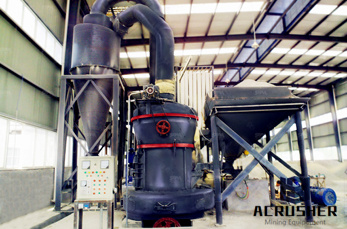
2017/08/11· Clays and Clay Minerals Clay is the common name for a number of finegrained, earthy materials that become plastic when wet. Chemically, clays are hydrous aluminium silicates, usually containing minor amounts of ...

Process for producing waterabsorbing polymer particles, wherein surfacepostcrosslinked, waterabsorbing polymer particles are remoisturized and delivered pneumatically, and wherein the time between remoisturization and ...

ABSORPTION OF WATER Unlike aquatic plants, terrestrial plants have to absorb water form the soil all the time to maintain turgidity, metabolic activities and growth of the plant. It is essential to understand the structure of soil, its ...

ION EXCHANGE REACTIONS OF CLAYS BY D. R. »* ABSTRACT It has been recognized for many ypars that many aspects of clay technolofcy including soil treatment and drilling nnul treatment must remain in an ...

It is difficult for water moving through dense soil such as clay to get through smaller openings, which slows the process down considerably. Soil that doesn''t absorb water also may have been packed down, which leaves water sitting ...

2017/08/14· めまれている· What''s the difference between Absorption and Adsorption? Absorption is the process in which a fluid is dissolved by a liquid or a solid (absorbent). Adsorption is the process in which atoms, ions or molecules from a ...

Process for the production of waterabsorbing polymer material with incorporated watersoluble substances and its use for the absorption and/or subsequent ... The invention relates to a process for the production of absorbers for ...

Table salt also contains a small amount of various chemicals used to keep the salt from absorbing water and caking. These chemicals include magnesium carbonate, calcium silicate, calcium phosphate, magnesium Process ...

Clay desiccant packets: Now stop the Adverse Impacts of Moisture We are already more or less aware of the importance of the different types of desiccants and their use for the sake of absorbing moisture, humidity and other ...

Current Category » Water Management Including Micro Irrigation Absorption and Movement of Water in Soil The movement of water from the soil surface into and through the soil is called water intake. It is the expression of several ...

Compensating for Shrinkage Moist clay begins to shrink as soon as it is taken out of its plastic storage bag and comes into direct contact with the air. Water is drawn out of the clay until it reaches the moisture content of the ...

Furthermore, the preferential uptake clearly suggests the role of specific carriers in the process of absorption of ions. 2. Salt Accumulation Analysis of the concentration of specific nutrients present within the cell sap and ...

Process for producing waterabsorbing polymer particles, wherein surfacepostcrosslinked, waterabsorbing polymer particles are remoisturized and delivered pneumatically, and wherein the time between remoisturization and ...

How plants absorb their food Plant composition: Plant tissues are made of, or contain, many components such as proteins, polysaccharides, amino and organic acids, etc. These compounds are themselves made of 80% So it is ...

In chemistry, absorption is a physical or chemical phenomenon or a process in which atoms, molecules or ions enter some bulk phase – gas, liquid or solid material. This is a different process from adsorption, since molecules ...

A process for producing waterabsorbing polymer particles, comprising polymerization, drying, comminution, classification and recycling of the undersize obtained in the classification, wherein the recycled undersize is coated with a ...

28 CLAYWATER RELATIONSHIPS IN CERAMICS the findings of Volarovich and Tolstoi (1934). This was followed by a steady decrease up to between 100 ~ and 110~ whilst heating beyond ll0~ caused no further ...

To prepare the paper clay, I mix dry stoneware or porcelain clay into water until it is the consistency of thick cream. To this, I add paper pulp made from cotton linter (available from most artsupply stores). I prefer to use cotton over ...

Waterabsorbing agent and production process therefor US 199928 200112 Internationale Verbandstoff Fabrik Schaffhausen Compress for .

Allow the sand to settle a short time. Then decant the clay water (the good slip from the top down to the sand) and discard the sand in the bottom. Allow the clay (slip) to settle and process it as described Iron impurities are very ...

C. Venturelli, M. Paganelli Expert System Solutions Modena/I Introduction The natural raw materials suitable for the production of ceramics consist of several families of minerals. Hydrated aluminosilicates, or clay minerals, are ...

ABSORPTIVE AND SWELLING PROPERTIES OF CLAYWATER SYSTEM BY ISAAC BAESHAD * INTRODUCTION The subject of the adsorption and swelling properties of the claywater system may be divided into three parts: (1 ...

2012/01/22· soil does not absorb water, it adsorbs water. plants absorb water. 2 basic parts of soil; voids (pores) and solids (sand, silt, clay, rocks, organic matter, etc.) volume of voids = volume of water it can hold if you are asking ...

It also reduces surface runoff by absorbing water (as much as 2 pounds of water per pound of humus). Description of the Activity Reason for Doing ...
 WhatsApp)
WhatsApp)